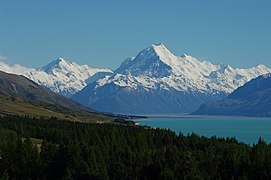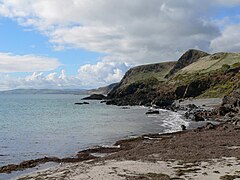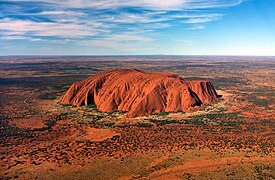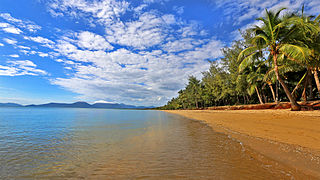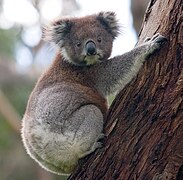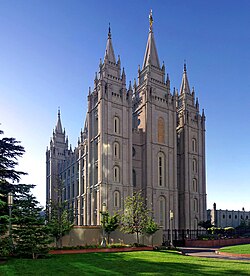Matharius
Federal Republic of Valentir République fédérale de Valentir | |
|---|---|
| Motto: Arduus ad solem "Striving towards the sun" | |
| Anthem: "TBD" | |
 Location of the Federal Republic in Kylaris | |
| Capital | |
| Largest city | |
| Official languages | Estmerish Gaullican |
| Demonym(s) | Valentirian |
| Government | Federal semi-presidential constitutional republic |
| Helene Pauline (PRP) | |
| Gaultier Babineaux (VFL) | |
| Aidan Bishop (NAWP) | |
| Thibault Devaux | |
| Genevieve Cantelli (VFL) | |
| Lucrezia Fiorentini (VFL) | |
| Legislature | Parliament |
| Senate | |
| Assembly | |
| Independence from the Estmerish Empire | |
| 1629 | |
| 1714 | |
| 4 September 1825 | |
| 11 January 1912 | |
| 13 June 1912 | |
| 19 July 1912 | |
| Area | |
• Total | 5,675,532 km2 (2,191,335 sq mi) |
• Water (%) | 1.34 |
| Population | |
• 2019 estimate | 55,051,345 |
• 2015 census | 51,690,103 |
| GDP (PPP) | 2019 estimate |
• Total | $2.604 trillion |
• Per capita | $47,318 |
| GDP (nominal) | 2019 estimate |
• Total | $2.584 trillion |
• Per capita | $46,952 |
| Gini (2019) | medium |
| HDI (2019) | very high |
| Currency | Valentirian Pound (VP, £) |
| Date format | dd-mm-yy |
| Driving side | left |
| Calling code | +61 |
| ISO 3166 code | VA |
| Internet TLD | .va |
The Federal Republic of Valentir (Gaullican: République Fédérale de Valentir) is a sovereign country comprising of the mainland of the Valentirian continent, the island of New Embria and numerous smaller islands. It is a federal republic composed of 15 constituent provinces, three territories, and various possessions. At 5.6 million km2 and with over 55 million people, Valentir is the largest country in Sublustria and the 5th largest in the world by total area and the twenty-second most populous country. The capital is Valeins and the largest city is Harborough, an important global city and financial centre with an urban population of 5.1 million. The country's other major metropolitan areas are Valanjou, Dunwall, New Lumbridge, Montsimmard, Winterley and Haussimont. Fourteen of the provinces are on the mainland of the continent. The Province of New Embria is an island located off the west coast of the continent. The various territories and island possessions are scattered about the Sublustrian Ocean, the furthest being St. Richard Island. The extremely diverse geography, climate, and wildlife of Valentir makes it one of the world's 4 megadiverse countries.
Valentir is considered a regional and middle power in international affairs and is a founding member of the Community of Nations, International Council for Democracy, C20, International Trade Organization, Global Institute for Fiscal Affairs, Sublustrian League, Council for Economic Co-operation and Development (CECD), Cavignac Group, and other international organizations. Valentir is also a member of the AFDC, an observer of COMSED, the OAN, and maintains a bi-lateral alliance with Nuxica.
A highly developed country, Valentir possesses the Xth largest economy in Kylaris. It has a high-income mixed market economy, with the world's Xth highest per capita income. Valentir benefits from a highly skilled and educated workforce; it has among the world's largest proportion of citizens holding a tertiary education degree. Its economy is primarily based around finance, telecommunications, mining, energy and manufacturing.
Having the second-highest human development index and the fourth-highest ranked democracy globally, the country ranks highly in quality of life, health, education, economic freedom, civil liberties and political rights, with all its major cities faring well in global comparative livability surveys. It is one of the world's most ethnically diverse and multicultural nations, the product of large-scale immigration from many other countries. Valentir has the world's Xth largest immigrant population, with immigrants accounting for 17.3% of the population.
Etymology

The name Valentir is derived from the surname of Amathian explorer Constantin Valentir, who completed several voyages across the Vehemens Ocean under the auspices of the Monarchs of Gaullica. In 1629 Valentir and the crew of HMS Marguerite became the first Eucleans to make landfall on the Valentirian continent. Subsequent Gaullican expeditions would eventually receive colonial charters from King Francois II.
In all official Gaullican documentation from that time Valentir is referred to as Terra Illustris (Solarian: Illustrious Land), a reference to the continents vast landscapes and natural resources. The continent would only be referred to as Valentir after the first Estmerish explorers arrived in the early 1640's. Estmerish cartographer Some Name produced a world map in 1647 on which he named the behemoth continent Valentir in honour of Constantin. At the time it is unknown why a Gaullican backed explorer was chosen for the honour, but historical records eventually revealed that Constantin provided the Estmerish details regarding his findings shortly after his return to Euclea. By the late 18th century Valentir was the international term applied to the continent.
- <Maori name>
- <Xiaodongese name>
History
The first recorded Euclean sighting of the Valentirian mainland, and the first recorded Euclean landfall on the Valentirian continent (in 1629), are attributed to the Gaullicans. The first ship and crew to chart the Valentirian coast and meet with Arateran people was the Couronne captained by Gaullican navigator, Jean-Luc de Valmont. The first settlement, Valanjou, was founded in 1631 as the capital of the Viceroyalty of Ghislaine, the first Gaullican colony. The island continent would be officially named Valentir, after royal decree awarded Valentin de Valeins a charter to establish and oversee colonisation of the island. The establishment of the Viceroyalties of Valmont (1633), Serault (1635), Laussonne (1636), Talissieu (1636), and Giseroux (1640) would follow.
Estmerish colonisation began in 1644 with the founding of New Ardougne and its capital, Dunwall, in north-eastern Valentir by Sir Martin Black, a privateer in the service of the Estmerish Royal Navy. The settlements of Harborough (1645), Draynor (1647), Axminster (1651), New Lumbridge (1653), and Amaranthine (1655) further established an Estmerish foothold on the continent. By the late 17th century most of the coast was controlled by either the Estmerish or Gaullicans. Competition between the rival maritime powers spurred rapid expansion. Conflicts between local tribes and petty kingdoms served as a means of proxy warfare between the colonial settlers. Territorial boundaries were in a state of constant dispute as a result of the Gilded Wars. The turmoil was worsened by the rise of piracy and banditry, both of which would see golden ages during the early 18th century.
A prominent feature of Estmerish expansion was the establishment of Shires, a series of homesteads centred around extensive grazing lands for cattle, sheep, pigs and horses. Shires became commonplace by the late 17th century and formed the cornerstone of Estmerish colonial life. The prominent Estmerish founding families expanded their estates steadily during the early 17th and 18th centuries. Overtime the estates became host to a familial manor at the heart of the estate, quarters for the estate's household, and all the necessary accessories of a traditional farmstead. These estates became known as Bans, which was used to denote the head of the estate as well. The word finds its origins from Amathian settlers who found work in the fields of the Bannorn, a huge collective of Bans in Western Valentir, specifically Westcliff, Harwich, Rotorua, and Oneawea.
Early 20th century
The Fair Society
Great War
Post-war period
Modern history
Environment
Geography
Climate
Biodiversity
Government and politics
Since independence in 1912, Valentir has been a federal semi-presidential republic with a parliamentary system of governance, with the President of Valentir serving as head of state and the Prime Minister of Valentir serving as head of government. Power is divided between the legislative, executive, and judicial branches of government, with each branch checking the power of its counterparts. This system of checks and balances was inspired by Asterian revolutionaries.
Executive
Executive power lies in the hands of the President who, unlike heads of state in parliamentary republics, maintains a degree of executive authority and influence in the government, especially concerning foreign affairs, national security, and the promulgation of laws. The President also may have a hand in the legislature, working with the Prime Minister to influence Parliament's agenda and direct the legislature, though this is very dependent on whether or not the President and Prime Minister share the same political party. Should the President and Prime Minister be from opposing parties it is customary that the president focus primarily on foreign affairs and the Prime Minister focus on internal affairs in what is commonly referred to as cohabitation.
The President of Valentir is elected through a two-round system of voting to serve a 4 year term. While there are no term limits in the Constitution, it was once tradition for presidents to only serve one term. This tradition was broken by President Raymond Whitmore, who served one term from 1952 to 1956. He ran again in 1972 and served until 1980, making him the longest serving head of state in Valentirian history.
In their capacity as head of state the President is also the commander-in-chief of the Valentirian National Armed Forces and is the chief diplomatic representative of the nation abroad. Helene Pauline of the Progressive Republican Party is the current President of Valentir, in office since 5 December 2016.
Legislature
According to the Constitution legislative power is held solely by the Parliament of Valentir, a bicameral legislature consisting of the Senate and the National Assembly. The Senate is composed of 150 Senators, 10 from each of the 15 provinces. Senators are popularly elected under the single transferable vote system of proportional representation. As such the chamber features a multitude of parties vying for power. The Assembly is composed of 600 Members of Parliament, elected using a parallel voting system, with 420 seats being elected through first-past-the-post in single-member constituencies known as electoral divisions. The other 180 seats are elected using a party-list proportional representation system. The Senate and National Assembly convene at St. Martin's Palace in the nation's capital, Valeins.
The Constitution states that presidential, senate, and assembly elections must be held 4 years after the previous election. While it is the mandate of the constitution to have elections every 4 years, the current Prime Minister may call for a snap election in Parliament before that time. A snap election may only occur if at least a majority of the Senate and National Assembly vote in favour of the motion.
The Prime Minister of Valentir is the chief legislative official and a member of the National Assembly. The Prime Minister is not an elected official, rather they are a Member of Parliament. The position of prime minister belongs to the person most likely to command the confidence of the Assembly; this individual is typically the leader of the political party or coalition of parties that holds the largest number of seats in that chamber. The prime minister chooses a cabinet, on advice from the president, and its members are formally appointed by the president to form the Cabinet of Valentir, the governing apparatus of the Federal government of Valentir. Gaultier Babineaux of the Valentirian Federation of Labour is the current Prime Minister of Valentir, in office since 1 December 2017.
Judiciary and law
Government finance
Foreign relations

Valentir is regarded as a regional and middle power in modern geopolitics, capable of deploying both soft power and hard power throughout the Asterias and Southern Coius. Valentir's foreign policy based on international peacekeeping and security is carried out through coalitions and international organizations, and through the work of numerous federal institutions, with a tendency to pursue multilateral solutions. Valentir maintains "Special Relationships" with Estmere, Gaullica, and Senria and a close partnership with Nuxica – the "Sant Picano-Valeins Concordat" – and shares extensive diplomatic, economic, defensive and cultural ties with Halland, Cassier and Caldia. A prominent member of the Asterian Forum for Development and Cooperation, close defensive and economic associations are shared with AFDC member states, particularly Satucin and Nuvania. Valentir also possesses observer status in the Council for Mutual Security and Development, a by-product of its strong historical ties and mutual strategic interests with Senria.
Through its membership in the International Council for Democracy, GIFA, C20, and Council for Economic Co-operation and Development, Valentir has pushed extensively for international democratization, economic liberalization, and deregulation of industry. Since the 1960's Valentir has aggressively championed the cause of trade liberalization through the International Trade Organisation, which also led to the formation of the Cavignac Group. A founding member country of the Community of Nations, Valentir is strongly committed to multilateralism and maintains an international aid program under which some 60 countries receive assistance. Valentir ranks twelfth overall in the Center for Global Development's 2019 Commitment to Development Index.
Valentir's foreign policy doctrine was primarily established during the late 1970's by President Raymond Whitmore. In a personal letter to his foreign minister, Harrison Wells, Whitmore established the principal objectives of modern Valentirian foreign policy, forming the basis of the subsequently named Whitmore Doctrine. The doctrine's focal point concerns strengthening economic and defensive relationships throughout the Asterias in an attempt to build a "Democratic Coalition to liberate Chervolesia from the filth of Syndicalism." Still considered the cornerstone of 21st Century Valentirian foreign policy, the Whitmore Doctrine is widely regarded by academics and political scientists as one of the most enduring achievements of any Valentirian President.
Armed forces and intelligence
The armed forces of Valentir, officially the Valentirian National Armed Forces, consists of four professional service branches: the Valentirian National Army, the Valentirian National Air Force, the Valentirian National Navy, and the Valentirian National Marine Force. The Valentirian armed forces are officially lead by the National Defence Council, which serves as the main organ in Valentirian military command. The NDC consists of the President, who serves as Commander-in-chief, the Chairman of the National Defence Council, who is appointed on advice from the Cabinet, and the Minister for Defence, who manages the armed forces as leader of the Department of Defence. The incumbent Chairman of the NDC as of January 2020 is ADM Terrence Hood, VNN. The armed forces is charged with the defence of Valentir, its territories, as well as promoting Valentir's global security interests and supporting international peacekeeping efforts. Valentir is a major contributor to CN peacekeeping missions and actively participates in disaster relief and armed conflict.

The Valentirian National Armed Forces is a volunteer army currently consisting of 487,000 active and 550,000 reserve personnel. The budget for the fiscal year 2019-2020 allocated £101 billion to the Department of Defence, about 3.9% of the country's GDP, representing the world's Xth largest defence budget.
Valentir has a large, advanced domestic arms industry that assists in equipping its armed forces with advanced weaponry and equipment. AMG Transport Dynamics, Blackwood Systems, Graystone Fleet Systems, Traxus Heavy Industries, Sandexon–Harland Corporation, and Stark Enterprises are among the leading defence contractors of the Valentirian armed forces.
Collection of data and operations concerning foreign and domestic intelligence is conducted by the Department for Home Affairs, which administers all intelligence and national law enforcement agencies. The Minister for Home Affairs reports directly to the Cabinet and President, whom the minister is appointed by. The principal national intelligence organization is the Secret Intelligence Service of Valentir, a conglomerate agency that consists of three separate branches responsible for directing all domestic, foreign and military intelligence. These agencies respectively are the Federal Security Bureau (FSB), the Central Intelligence Service (CIS), and the Military Intelligence Directorate (MID). The incumbent Minister for Home Affairs as of January 2020 is MP Scarlet Gresham of the Valentirian Federation of Labour.
Provinces and territories
Established in 1912 as a federation, Valentir is a federal republic consisting of 15 provinces, three territories, and several uninhabited island possessions. The provinces and territories are the central administrative divisions in the country. These are further divided into the subdivisions of counties and independent cities. Counties, referred to as Départements in Gaullican provinces and Whakahaere in Arateran provinces, are then divided into Shires, also referred to as Cantons and Kaainga respectively.
| Arms | Province | Capital | Population | Premier | Governing party | |
| Aigremont | Cavignac | 1,678,925 | François Rozenthal | AP-DS | ||
| Dryden | Clovis | 2,361,828 | Stephen Hayes | PRP | ||
| Ghislaine | Valanjou | 5,382,858 | Gaétan Guérin | RPG | ||
| Harwich | Draynor | 831,927 | Edward Hargreaves | PRP | ||
| Kensington | Axminster | 3,271,875 | Issac Barton | PRP | ||
| Laussonne | Brieuil | 2,789,426 | Dominique Perrault | A-CL | ||
| New Ardougne | Dunwall | 3,826,716 | Rosalyn Wescott | NAWP | ||
| New Embria | Winterley | 1,122,473 | Henry FitzRoy | PRP | ||
| Oneawea | Ahuimanu | 982,626 | Arcibald Waldman | VFL | ||
| Rotorua | Tāhaenui | 1,498,147 | Vanessa Duriès | VFL | ||
| Serault | Montsimmard | 3,093,544 | Jean-Pierre Cassel | VFL | ||
| Talissieu | Haussimont | 5,036,810 | Tristan Teyssier | AP-DS | ||
| Tarrington | New Lumbridge | 7,068,056 | Mark Harris | PRP | ||
| Vallois | Valeins | 4,171,253 | Vincent Gladden | PRP | ||
| Westcliff | Harborough | 8,573,639 | Emelia Mayer | NLP |
Economy
Valentir has a high-income mixed market economy which is fueled by abundant natural resources, a highly skilled labour force, a low level of corruption, and a high level of innovation. In 2019 Valentir's estimated nominal GDP was $2.584 trillion, the Xth largest in the world. It is the world's Xth largest exporter of goods, and has the largest national economy in Sublustria and Asteria Inferior.
The Ministry for the Federal Treasury (Ministère du Trésor fédéral) is responsible for setting government expenditure and implementing government financial policy. The Federal Reserve Bank of Valentir is the country's central bank and is responsible for issuing notes and coins in the nation's currency, the pound. Provincial banks retain the right to issue their own notes, subject to retaining enough Federal Reserve notes in reserve to cover their issue. Since 1983 the Federal Reserve, headed by the Chairman of the Federal Reserve, has been responsible for setting interest rates at the level necessary to achieve the overall inflation target for the economy that is set by the Finance minister each year.
Agriculture
Valentir is one of the leading agricultural producers and exporters in Kylaris, with agriculture forming a significant sector in the economy. Accounting for 8.2% of the GDP, agriculture and closely associated sectors employed nearly 589,300 people and earned $214 billion in 2019. Capitalizing on ample fertile lands, agricultural production is primarily concentrated in western and northern regions of the country. Westcliff maintains the largest agricultural industry out of all Valentirian provinces, with farmers and graziers alone maintaining 27,500 farms and ranches across the province.
The beef industry is the largest enterprise within the agricultural sector in Valentir, and it is the second largest exporter of beef behind Satucin, in the world. Cattle production is spread throughout an area that covers nearly 170 million hectares of land located mainly in Westcliff, Talissieu, Ghislaine, and New Ardougne. The Valentirian beef industry is dependent on export markets, with over 60% of Valentirian beef production exported, primarily to Nuxica, Senria and Halland.
Valentir is also one of the world's leading producers and exporters of wheat, lamb, poultry, dairy, vegetables, fruits, wool and seafood.
In recent years Valentir has developed a growing wine industry, and the value of wine exports surpassed $2.4 billion in 2019. Wine regions include the Mirabella Valley in Ghislaine, Amaranthine in Westcliff, Dryden River in Kensington and the Recherche Valley in Talissieu. The key wine varieties grown in Valentir are Chardonnay, Shiraz and Cabernet Sauvignon.
Finance
Energy
Infrastructure
Manufacturing
Science and technology
Demographics
| Rank | State | Pop. | Rank | State | Pop. | ||||
|---|---|---|---|---|---|---|---|---|---|
 Harborough  Shadwell |
1 | Harborough | Westcliff | 5,137,863 | 11 | Draynor | Harwich | 512,365 |  Valanjou  Valeins |
| 2 | Shadwell | Tarrington | 4,793,426 | 12 | Tāhaenui | Rotorua | 493,602 | ||
| 3 | Valanjou | Ghislaine | 2,413,217 | 13 | Cavignac | Aigremont | 487,364 | ||
| 4 | Valeins | Vallois | 2,183,717 | 14 | Clovis | Dryden | 469,246 | ||
| 5 | Haussimont | Talissieu | 1,829,911 | 15 | Amaranthine | Westcliff | 331,491 | ||
| 6 | Dunwall | New Ardougne | 1,345,771 | 16 | Verchiel | Ghislaine | 329,101 | ||
| 7 | Montsimmard | Serault | 947,611 | 17 | Ahuimanu | Oneawea | 302,483 | ||
| 8 | Winterley | New Embria | 701,337 | 18 | Sahrnia | Serault | 261,258 | ||
| 9 | Brieuil | Laussonne | 623,525 | 19 | Gwaren | Tarrington | 252,689 | ||
| 10 | Axminster | Kensington | 566,093 | 20 | Montfort | Talissieu | 206,147 | ||
Ethnic Groups
Race and ethnicity in Valentir
Languages
A multitude of languages are used by Valentirians, with Estmerish and Gaullican being the official, federally mandated languages of Valentir.
Religion
Immigration
Healthcare
Education
Culture
Literature
Media
Music
Sport
Cuisine



